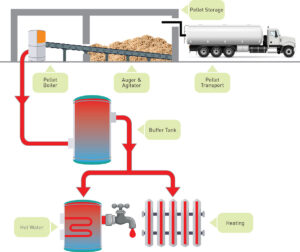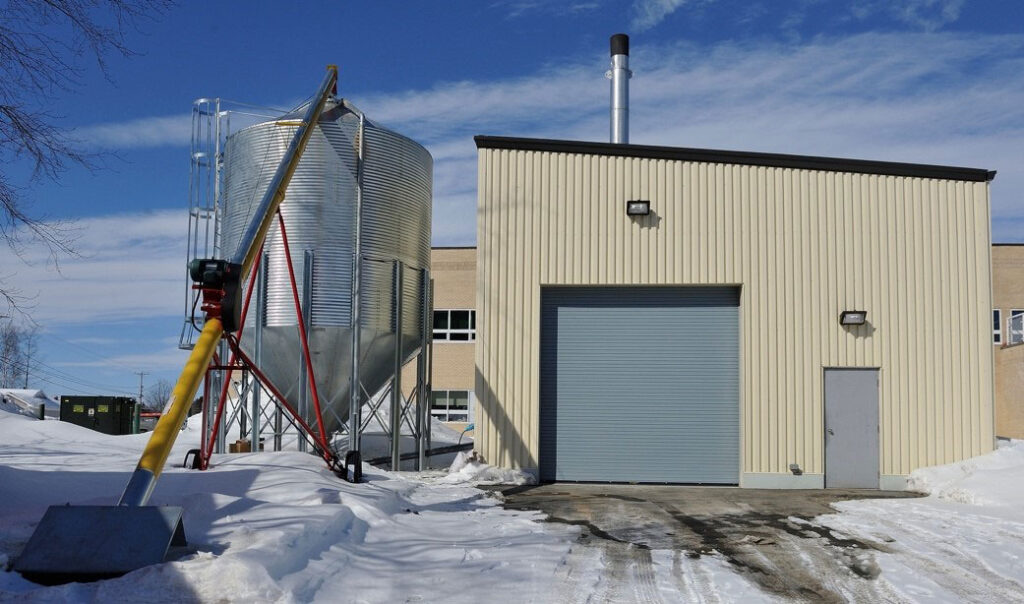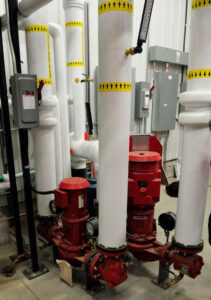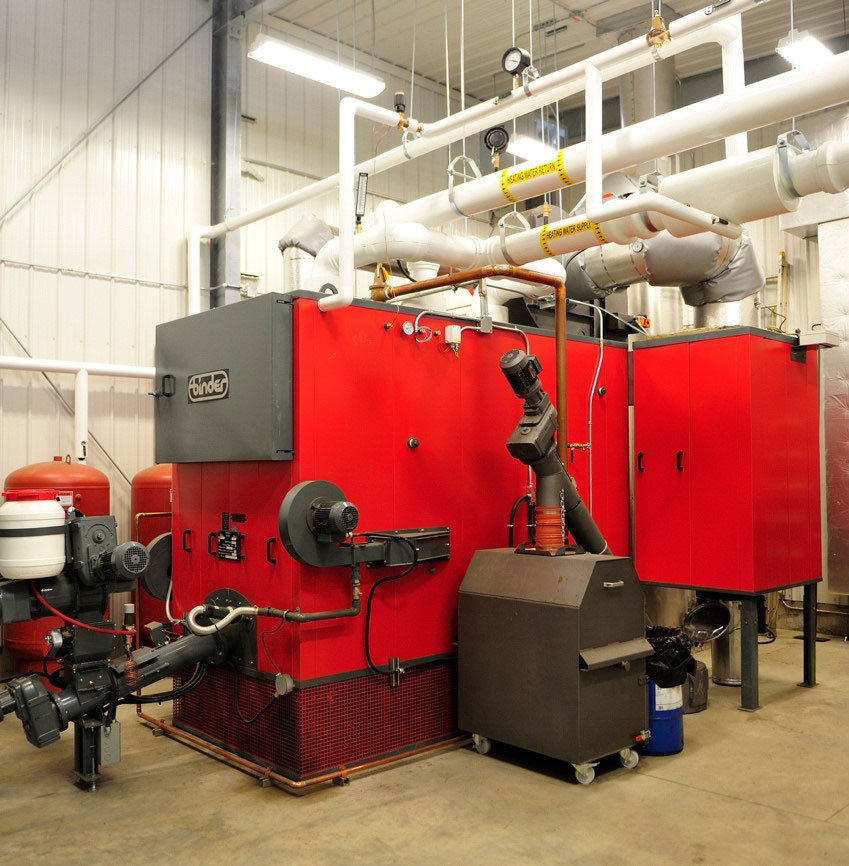Canadian wood pellets are used for institutional and commercial heating using modern biomass boiler systems that are every bit as automated and convenient as natural gas and oil heating systems.
Today, in Canada, wood pellets are used to heat schools, universities, government buildings, hospitals, churches, bakeries, greenhouses and for many other applications. Modern biomass heating systems are designed to require little maintenance beyond periodic ash disposal, can be refueled just once or twice a year, and can be controlled remotely by using a smart phone app.
Modern wood pellet boilers are commonly used to replace heating oil boilers, resulting in lower operating costs and extremely low particulate emissions. Oil boilers emit around 50 mg/MJ while wood pellet boilers emit closer to 20 mg/MJ or less. The use of high efficiency modern filters, such as ceramic filters, can ensure that particulate emissions are kept extremely low (3 in the flue gas) at all times.
Modern wood pellet boilers make use of hydronic (water-based) heating. Wood pellets are delivered in bulk and stored in a silo, bunker, or storge bin. Automated controls from the boiler will activate an auger that will transport pellets to the boiler combustion chamber. Water is heated through a heat exchanger and transported to a hot water buffer tank, which in turn will distribute hot water to a domestic hot water tank or through pipes to in-floor heating or wall-mounted radiators. Temperature is automatically controlled by a thermostat.
Wood pellets can also be used for traditional forced-air heating where pellets are combusted in a furnace and a blower is used to distribute hot air through heating ducts similar to the way natural gas and oil furnaces work.
Click here for a list of institutional boilers in Canada.





Since 2020, the Wood Pellet Association of Canada (WPAC) has been pursuing change in Canadian biomass boiler-related standards to make it easier and more affordable for Canadians to acquire pellet-fired boilers for central heating.
Most of the high-quality pellet boilers in the world are manufactured in western Europe, primarily in Austria and Germany, to the standards required by the European Union. These standards are acceptable in many countries around the world, and WPAC would like to see them acceptable here in Canada.
Nearly all of the three million tonnes of wood pellets Wood Pellet Association members produce each year are shipped offshore to help other countries meet their greenhouse gas reduction goals. WPAC would like to see this domestic, renewable energy product used for the financial and environmental benefit of Canadians.
As WPAC has worked to promote the necessary regulatory changes required to make pellet central heating more accessible to Canadians, it has become clear that there is little understanding of pellet heating beyond that provided by pellet stoves. Pellet central heating is whole building heating that is fully automated, as is fossil fuel heating, without the manual fuel and ash handling pellet stove customers have come to know.
To help decision-makers in some Canadian organizations understand pellet central heating and the current state of the practice in Canada, WPAC has produced a simple document describing basic pellet central heating and its current adoption in several provinces of Canada.
dive deeper
External Link
Stay Current
Sign up for email updates from WPAC
